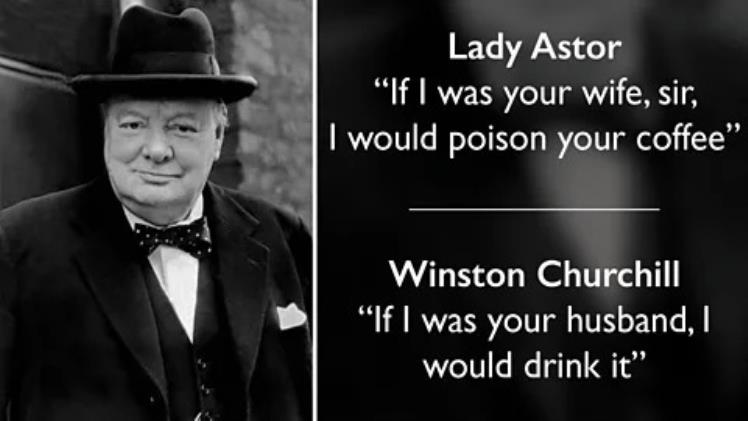Get ready to master the art of responding to the ever-so-vague “oh” with a list of clever, witty, and thoughtful replies.
Ever find yourself at a loss for words when someone drops an unexpected “Oh” into a conversation? Fear not, conversational wizard—this article is your spellbook. Whether you need to sound intrigued, indifferent, or downright fascinated, we’ve got the perfect responses to transform your “Oh” moments from awkward to awesome. Dive in and discover a whole new world of conversation magic!
Key takeaways:
- Acknowledge but remain neutral: “Oh, Okay.”
- Show genuine curiosity: “Oh, Interesting!”
- Express admiration: “Oh, Wow!”
- Convey understanding: “Oh, I See.”
- Encourage further dialogue: “Oh, Tell Me More!”
“Oh… Really?”
This is the masterstroke of skeptical intrigue. It’s the verbal equivalent of raising an eyebrow.
Here’s how to wield it effectively:
– Use it when presented with surprising information. It conveys both curiosity and a hint of doubt.
– Keep your tone neutral. Lean too hard on skepticism, and it becomes antagonistic; too light, and you lose the intrigue.
– Pair it with a slight pause. Let the “Oh” hang for just a beat before adding “really.” This gives your conversation partner a moment to ponder their revelation.
– Perfect for those moments when you hear someone claim they can juggle flaming torches or that they’ve seen a UFO.
Go forth and keep the skeptics on their toes.
“Oh, Okay.”
When you whip out this gem, you’re basically saying, “I acknowledge your statement, but I’m not exactly doing cartwheels over it.” It’s the ultimate neutralizer in conversations – no fuss, just acknowledgment.
First off, keep it light. It’s perfect for those non-committal moments. You don’t need to dive deep into discussions.
Use it when you need a pause. It gives you a moment to think before responding further. It’s conversational yoga – stretch your thoughts.
Sometimes, it avoids awkwardness. If what someone said doesn’t require an elaborate response, this keeps things smooth.
Lastly, it’s a fence-sitter’s delight. It’s the perfect middle-ground response, not too cold, not too enthusiastic. Goldilocks would approve.
“Oh, Interesting!”
When you respond with this phrase, you’re showing genuine curiosity. You’re intrigued but not fully sold yet. Think of it as the verbal equivalent of raising an eyebrow.
- Express Engagement: It tells the other person you’re mentally present. You’re not just nodding along; you’re actually paying attention.
- Open the Floor: This response invites more details. It’s like saying, “You’ve got my attention, keep going.” Perfect for conversations you want to dive deeper into.
- Versatile Use: Use it in anything from mundane small talk to profound discussions. It’s universally applicable.
Sprinkle in this phrase to keep dialogues lively and engaging. Your conversation partner will appreciate the boost of confidence and acknowledgment.

“Oh, Wow!”
Sometimes, you’re genuinely impressed or taken aback by what you’ve just heard. This is where a bit of enthusiasm can go a long way. Let’s sprinkle some fun on that “Oh”!
When someone shares exciting news or an impressive fact, showing genuine surprise or admiration can be delightful. It’s like giving a little verbal high-five. Imagine your friend just told you they won a karaoke contest. Your reply could be:
- “Oh, wow, that’s amazing!”
- “Oh, wow! Didn’t know you had those pipes!”
Pacing is key. Quick and genuine shows you’re fully engaged. Over-elongating it can sometimes sound sarcastic, so watch your tone.
And remember, emojis are your friends in texts. Throw in a confetti or sparkle emoji to amplify your message. Because, really, who doesn’t love a good sprinkle of visual joy?
So next time you’re wowed, let it show! Your friend will appreciate the burst of positivity.
“Oh, I See.”
Perfect for moments when you genuinely want to convey understanding, this phrase signals that you’re on the same page.
It shows you’re paying attention. It’s a low-key way to say, “I’m listening and processing what you’re saying.”
It’s versatile. You can use it when someone explains something complex or just shares a personal story.
It keeps the conversation moving. By acknowledging their point, you make it easier for the other person to continue sharing.
It’s friendly but neutral. You’re showing empathy without necessarily agreeing or disagreeing.
Try it with a nod. Body language adds emphasis, making your reply more engaging.
Next time someone drops a data bomb or life update, this phrase can be your conversational parachute.
“Oh, Nice.”
This one is your go-to for positive, yet neutral responses. It’s versatile and safe, perfect for those moments when you want to acknowledge something pleasantly but don’t have much more to add.
- Use it when:
- Someone shares a mild achievement: “I just learned how to bake bread.” “Oh, nice.”
- You hear a piece of fun trivia: “Did you know bananas are berries?” “Oh, nice.”
- A friend gets a new haircut: “I trimmed my hair today.” “Oh, nice.”
Stay careful, though. Overusing it can make you sound uninterested. Keep it fresh by varying your reactions. Try to match your enthusiasm level to the context. Too much excitement for a minor event might come off as insincere. But in the right amounts, it’s gold.
“Oh, Tell Me More!”
Want to show genuine interest and keep the convo alive? This one’s your golden ticket.
First off, it signals that you’re all ears. Your listener will feel valued and understood. Who doesn’t love that?
Next, it’s a great way to dig deeper. Curious about the nitty-gritty? This prompt invites more details without sounding nosy.
It also keeps you engaged. Instead of passively nodding, you’re actively participating.
Lastly, it’s versatile. From juicy gossip to tech talk, it fits any chat.
So, next time you hear something intriguing, give a nod and ask for the encore.
“Oh, Got It.”
You’ve hit the jackpot – clarity! When you use this, it signals that you understand what’s been communicated. It’s great for avoiding unnecessary back-and-forths and keeps conversations efficient.
Here’s when to use it:
- Receiving Instructions: Whether it’s directions to the secret doughnut stash or a step-by-step guide to assemble furniture. A simple acknowledgment shows you’re on board.
- Ending Confusion: After an explanation or clarification, it indicates that the fog has lifted from your brain, and you’re now a beacon of comprehension.
- Showing Engagement: It subtly tells the speaker you’re attentive and can follow the flow. Great way to be the star listener in any chat.
- Professional Touch: In workplace emails or meetings, adding this phrase shows you’re capable and reliable. Bosses love that!
“Oh, That’s Cool.”
When you need a casual yet appreciative response, it’s a versatile go-to. It works wonders with good news, show-and-tells, and fun facts. Here’s how to nail it:
Acknowledge the Effort: Whether your friend’s finally mastered the Rubik’s Cube or your cousin adopted a pet rock, express genuine interest. It’s cooler than you think.
Show Enthusiasm: Don’t just mumble it. Put some pep in that “cool” to give it life. Enthusiasm is contagious.
Keep It Light: This phrase is perfect for breezy, non-serious contexts. Don’t overthink it. Just roll with it.
Ask Follow-Up Questions: Add a bit more to your response if the moment calls for it. “Cool, how long did it take you?” keeps the conversation flowing.
Mix It Up: Feel free to sprinkle in some variations. “Cool beans!” or “That’s rad!” can add a quirky twist.
Make it Yours: Own the cool. Tailor it to your personality and vibe, and it’ll never sound canned.
“Oh? Is That So?”
When you want to show genuine curiosity, this phrase is your secret weapon. It conveys interest and opens the door for the other person to share more details. Here’s how you master it:
- Tone is Key: Say it with a slight upward inflection, like you’re really intrigued.
- Follow-Up: Be ready to ask more questions. “What happened next?” can keep the conversation flowing.
- Facial Expressions: Raise an eyebrow or nod. Visual cues amplify spoken curiosity.
- Engagement: Don’t just say it and zone out. Actually listen. People know when you’re faking!
Use this to turn a simple “oh” into an invitation for deeper dialogue.
